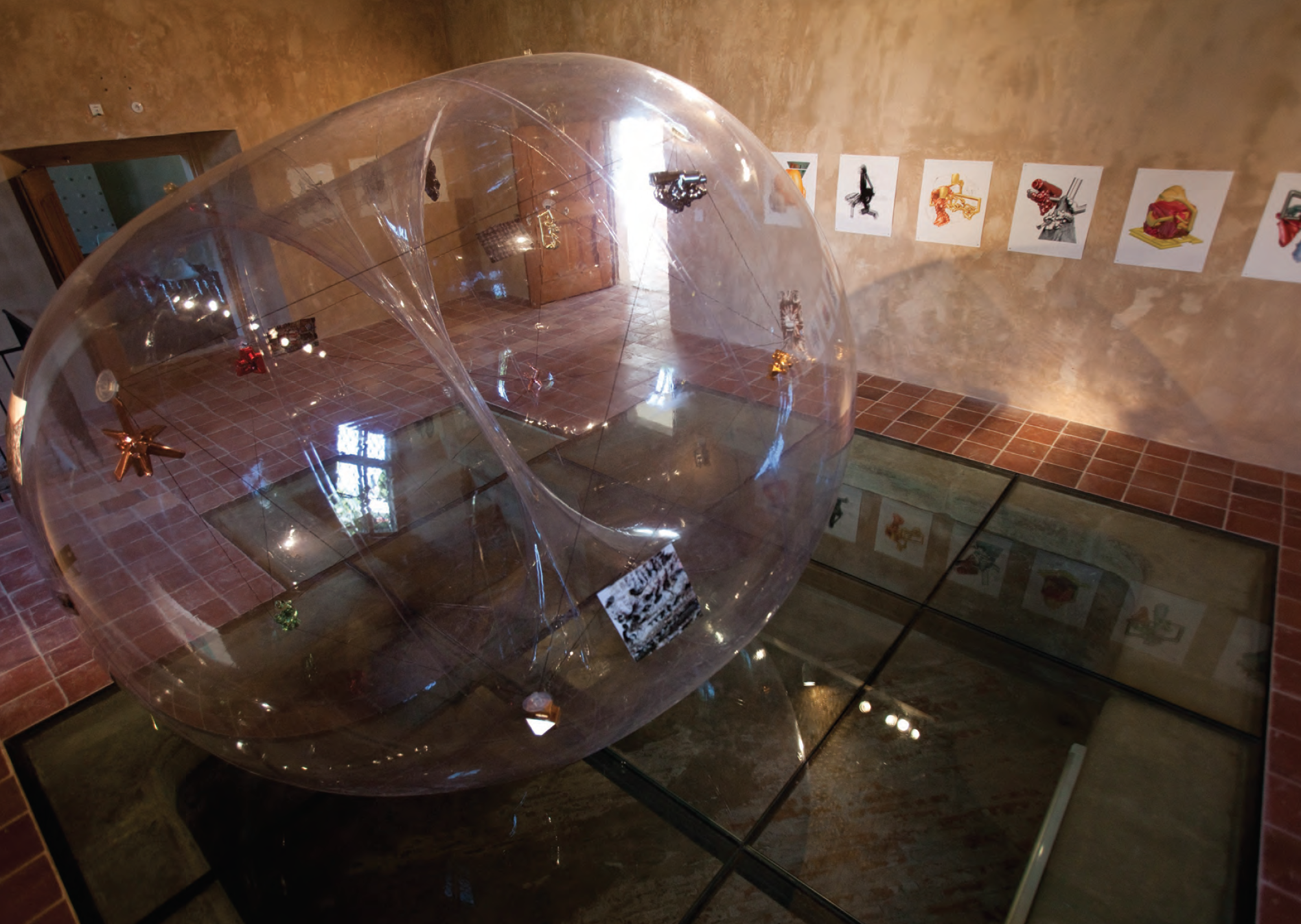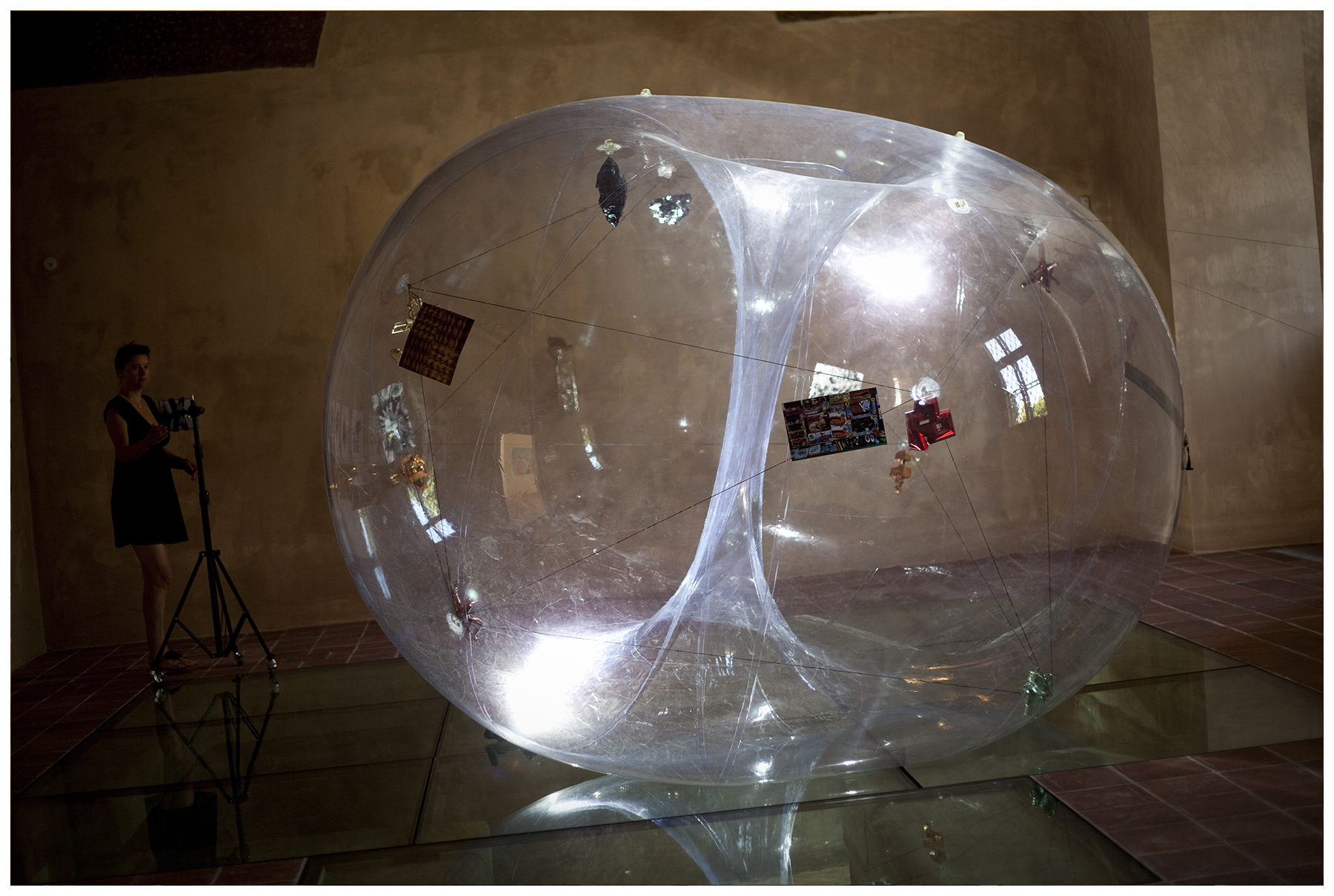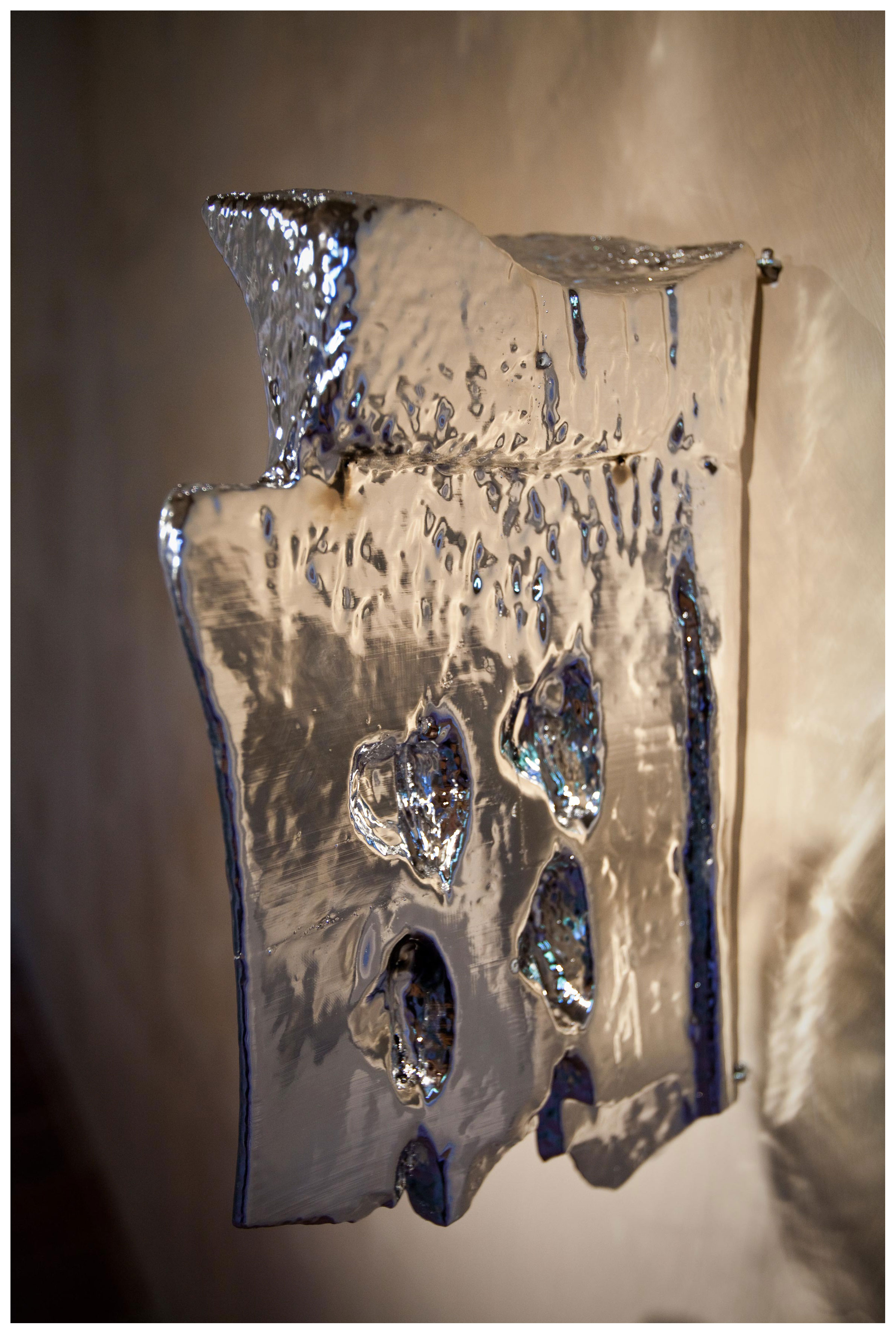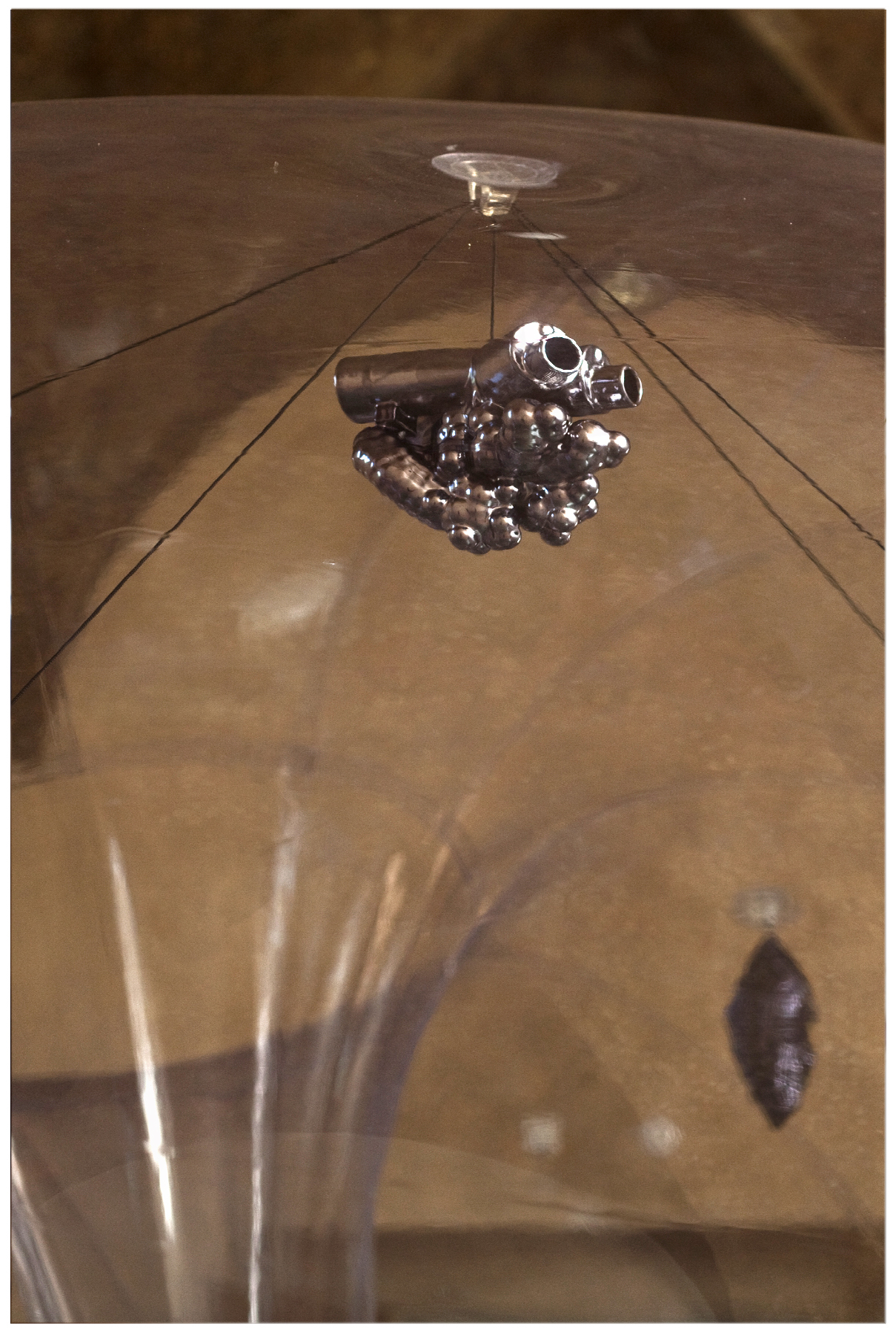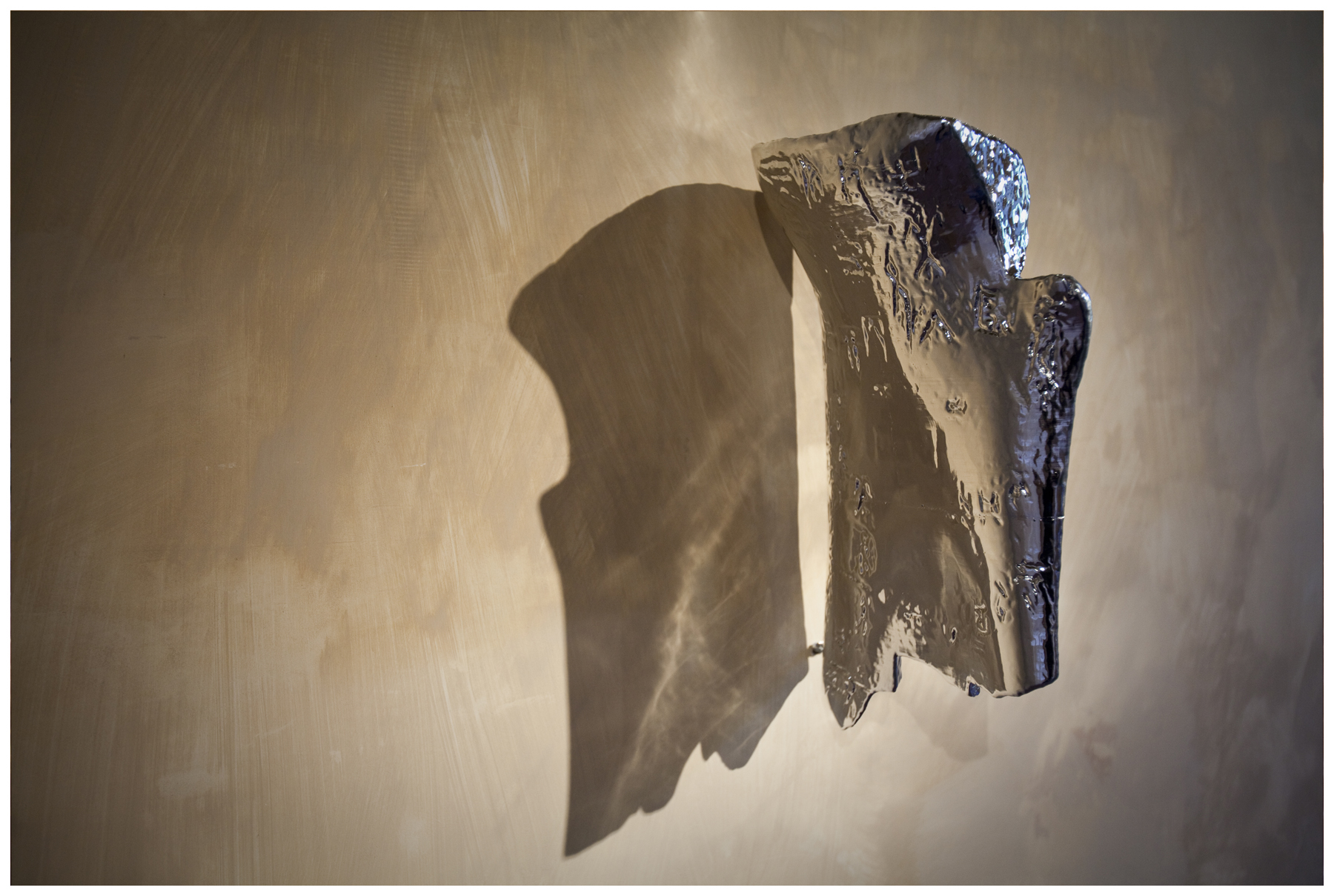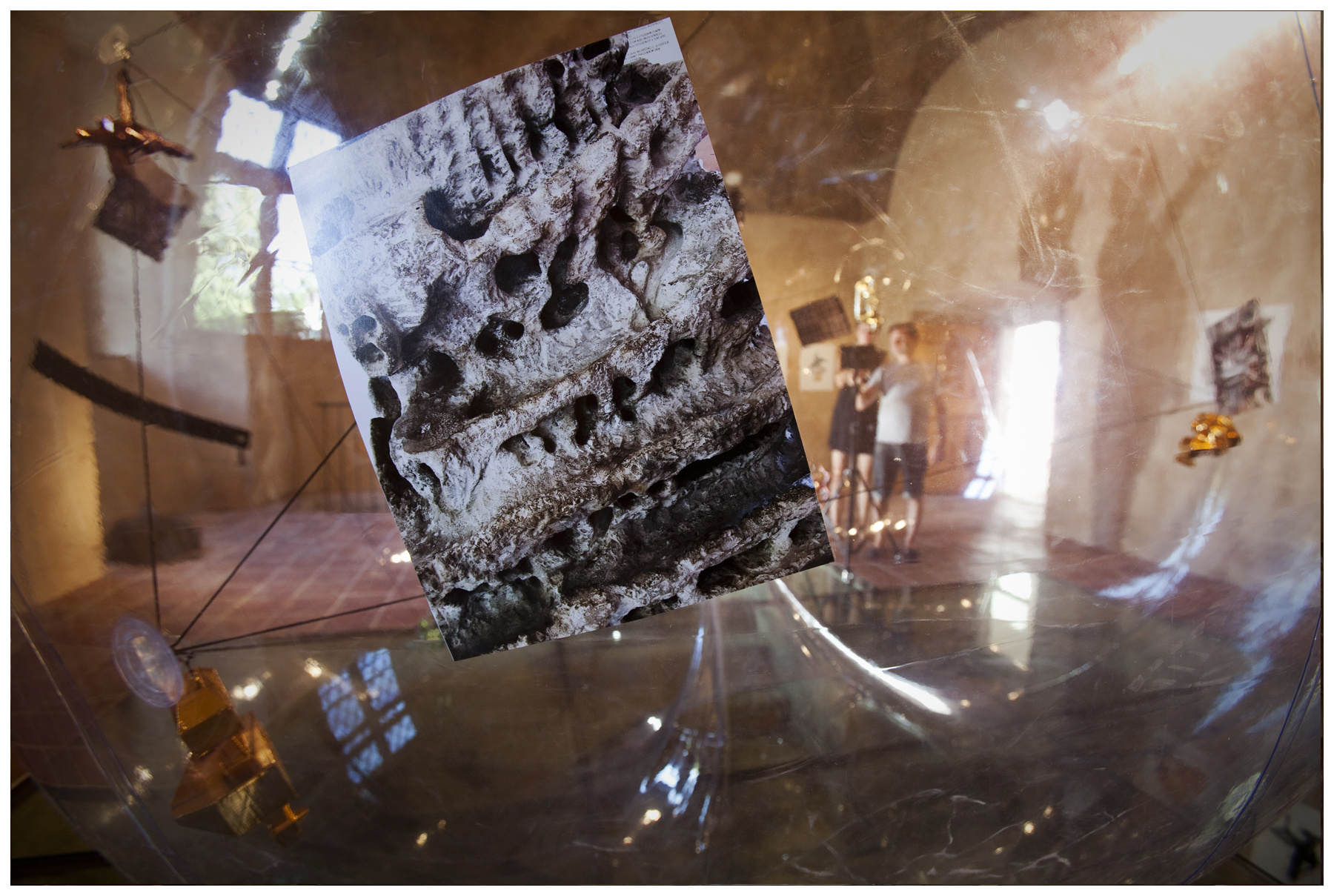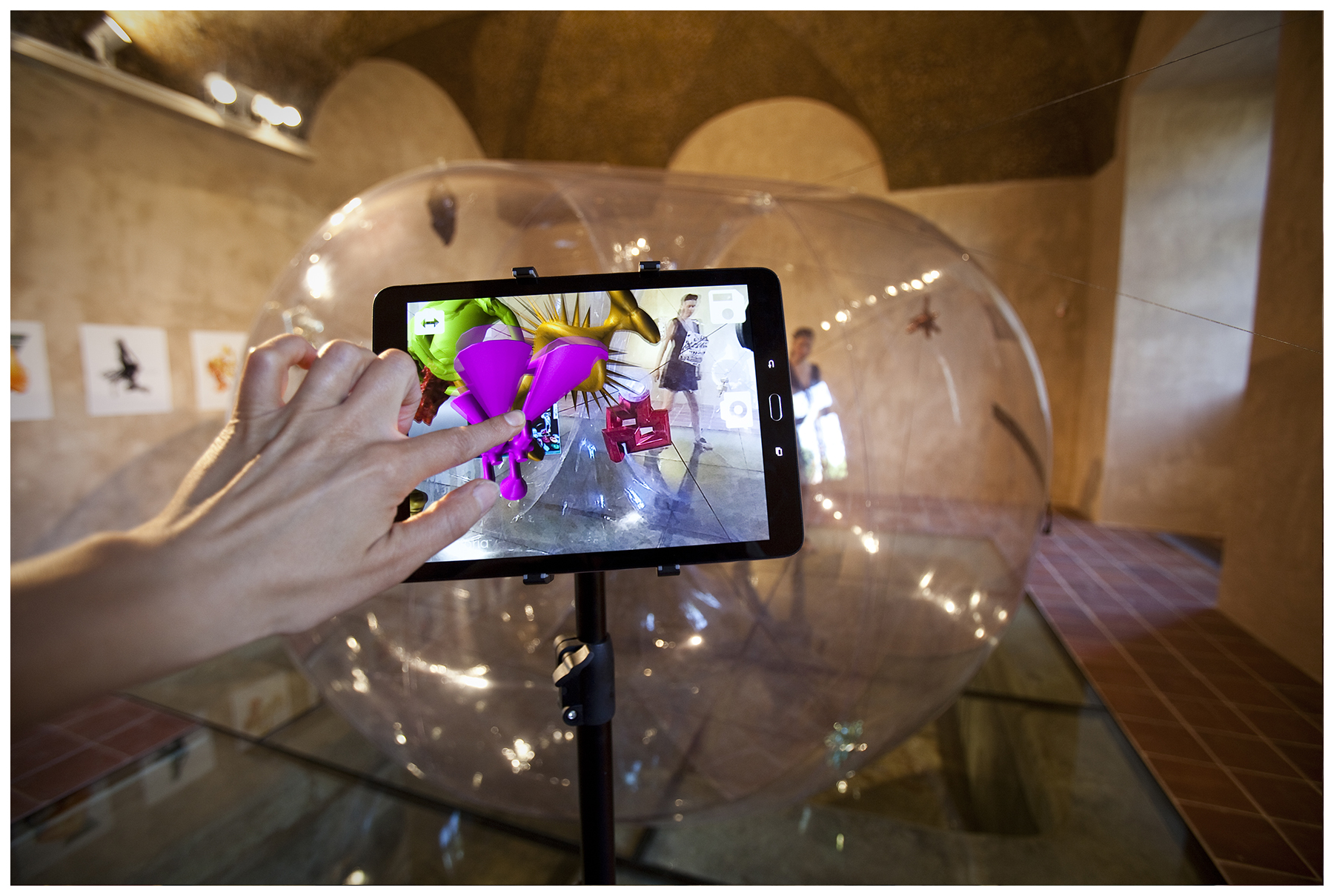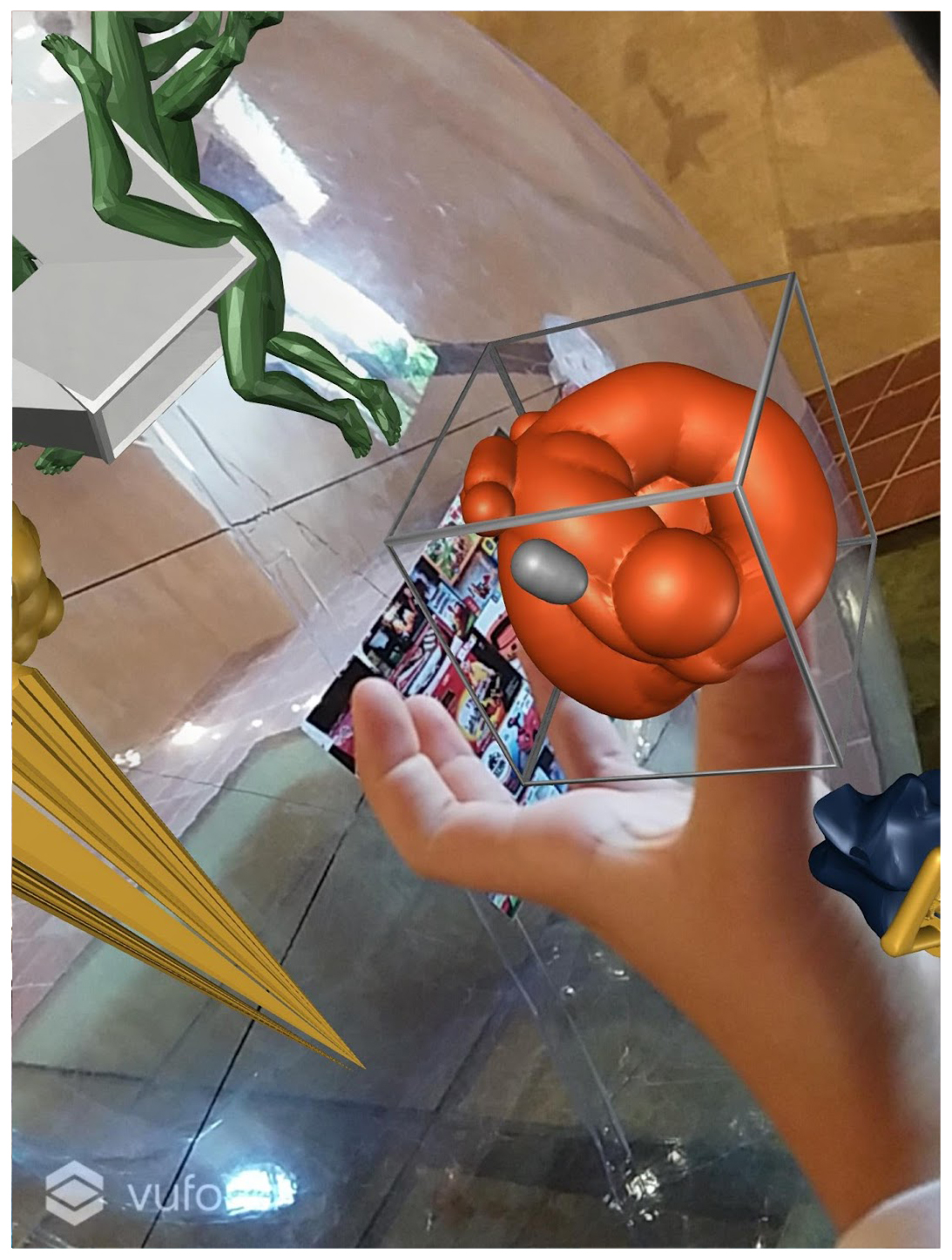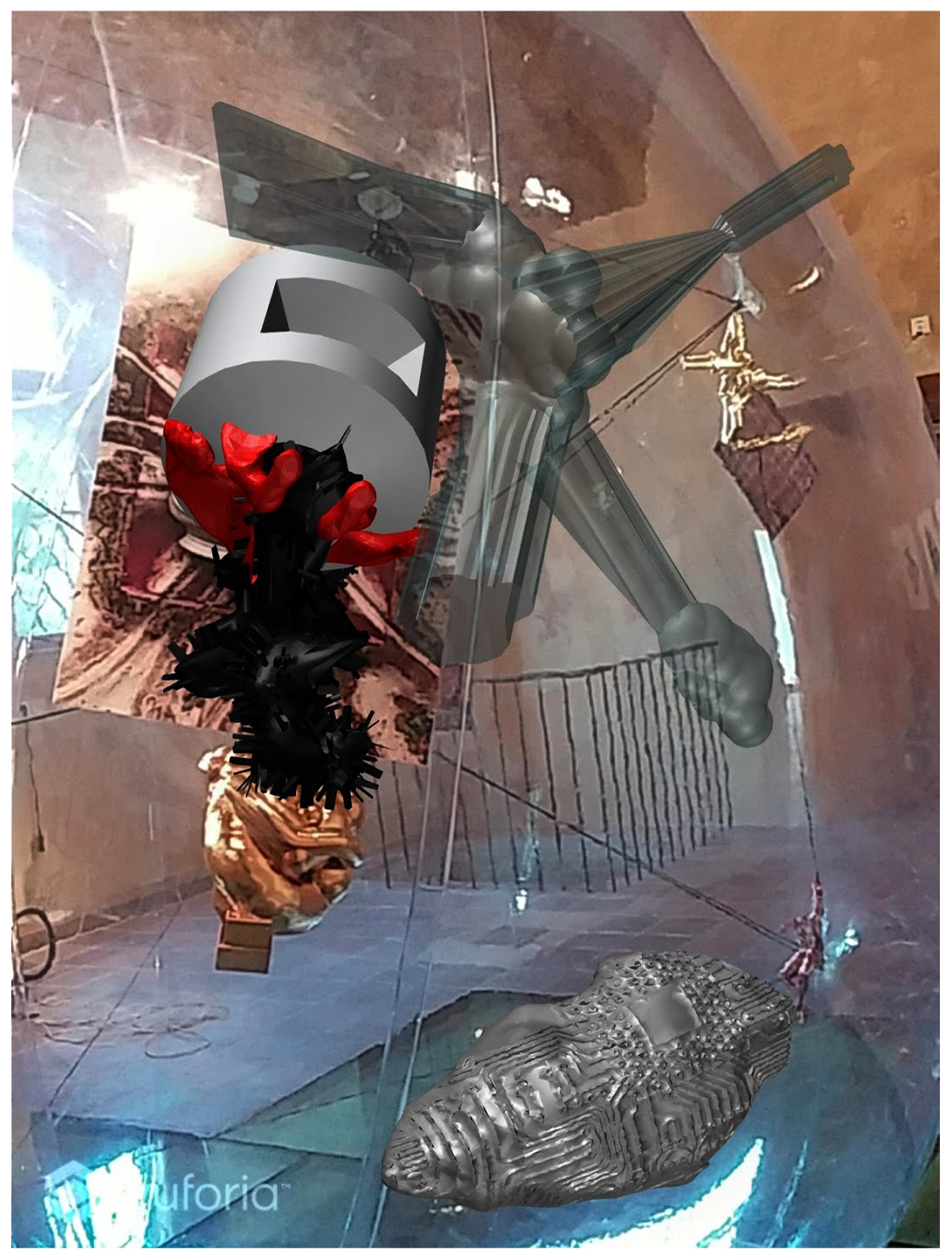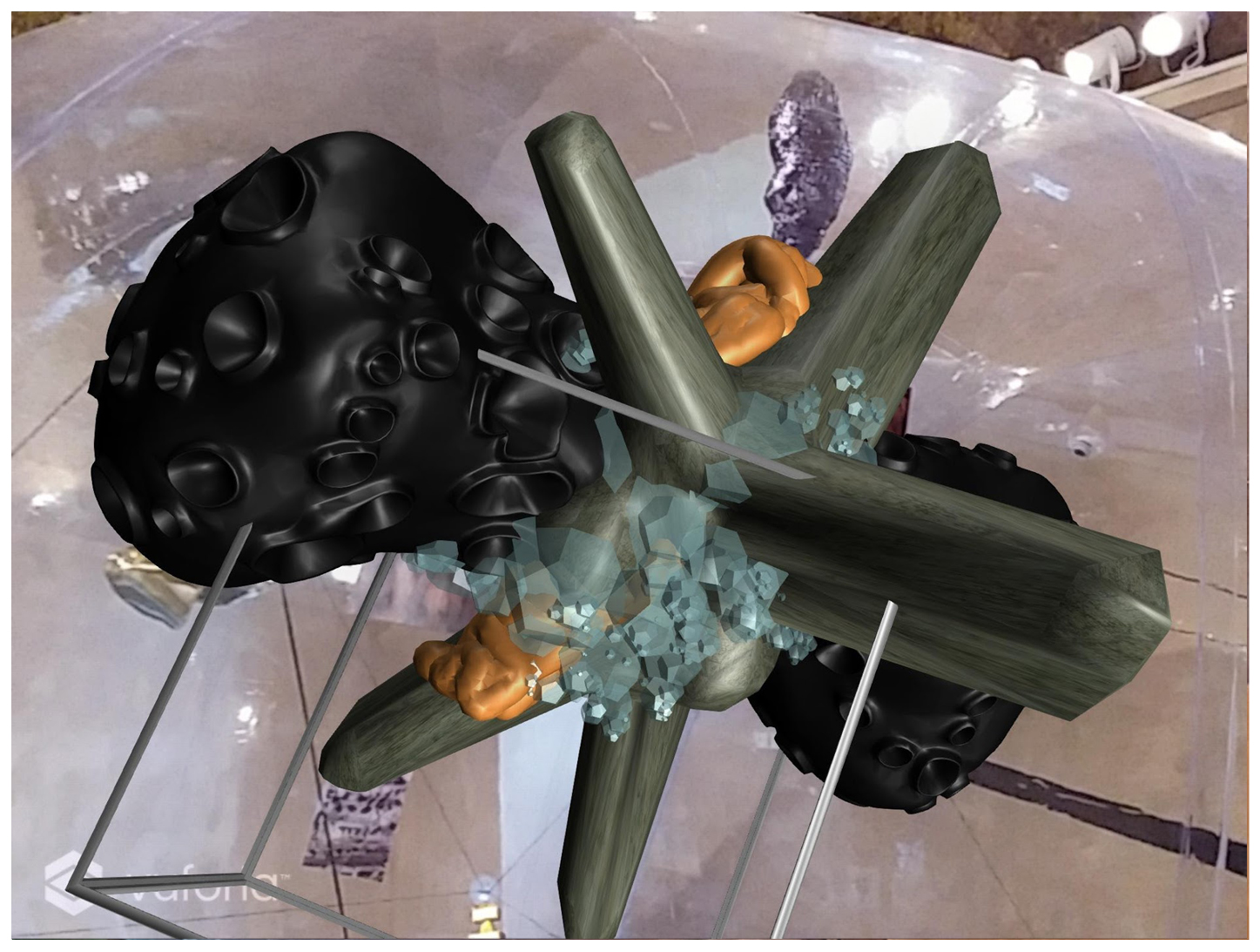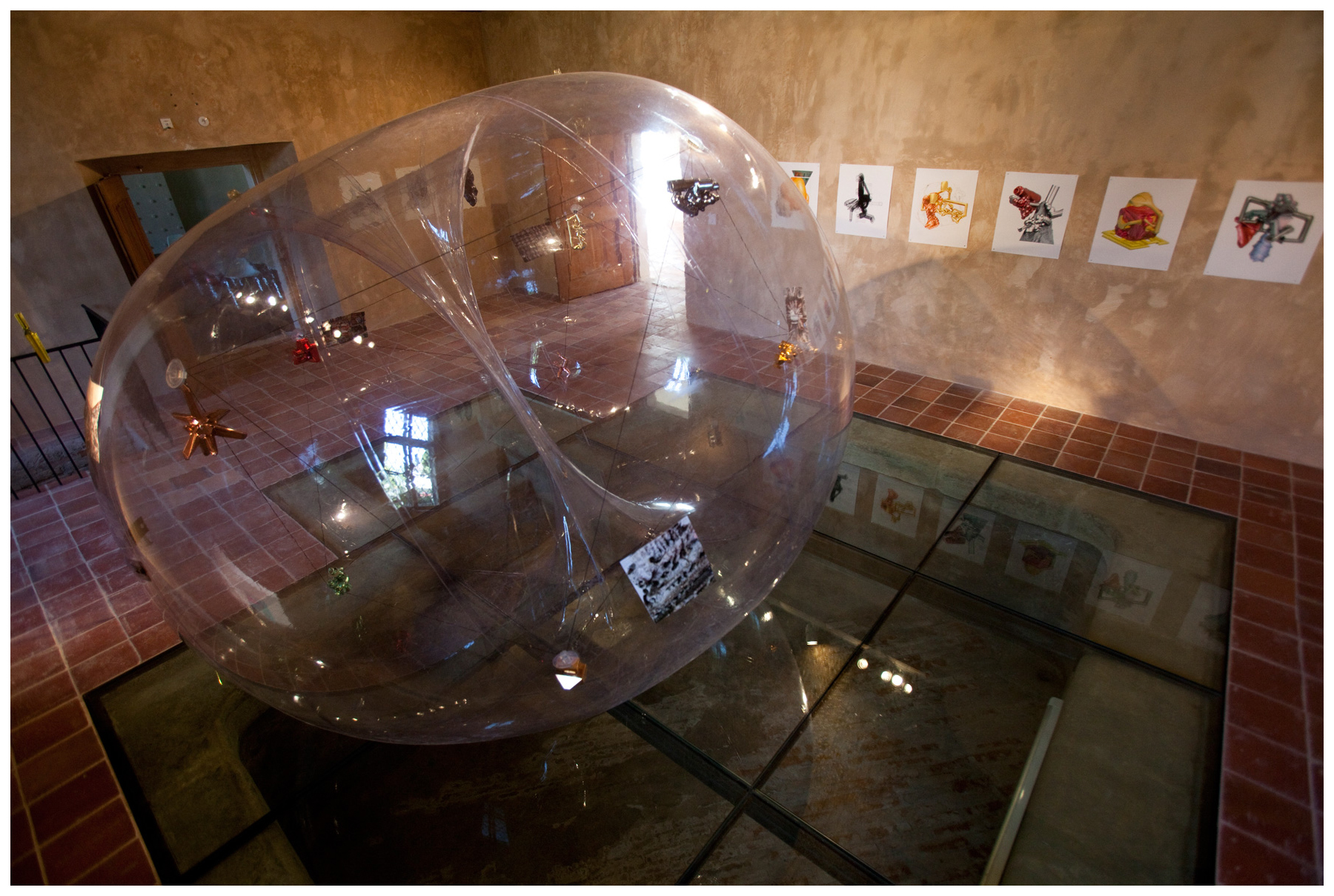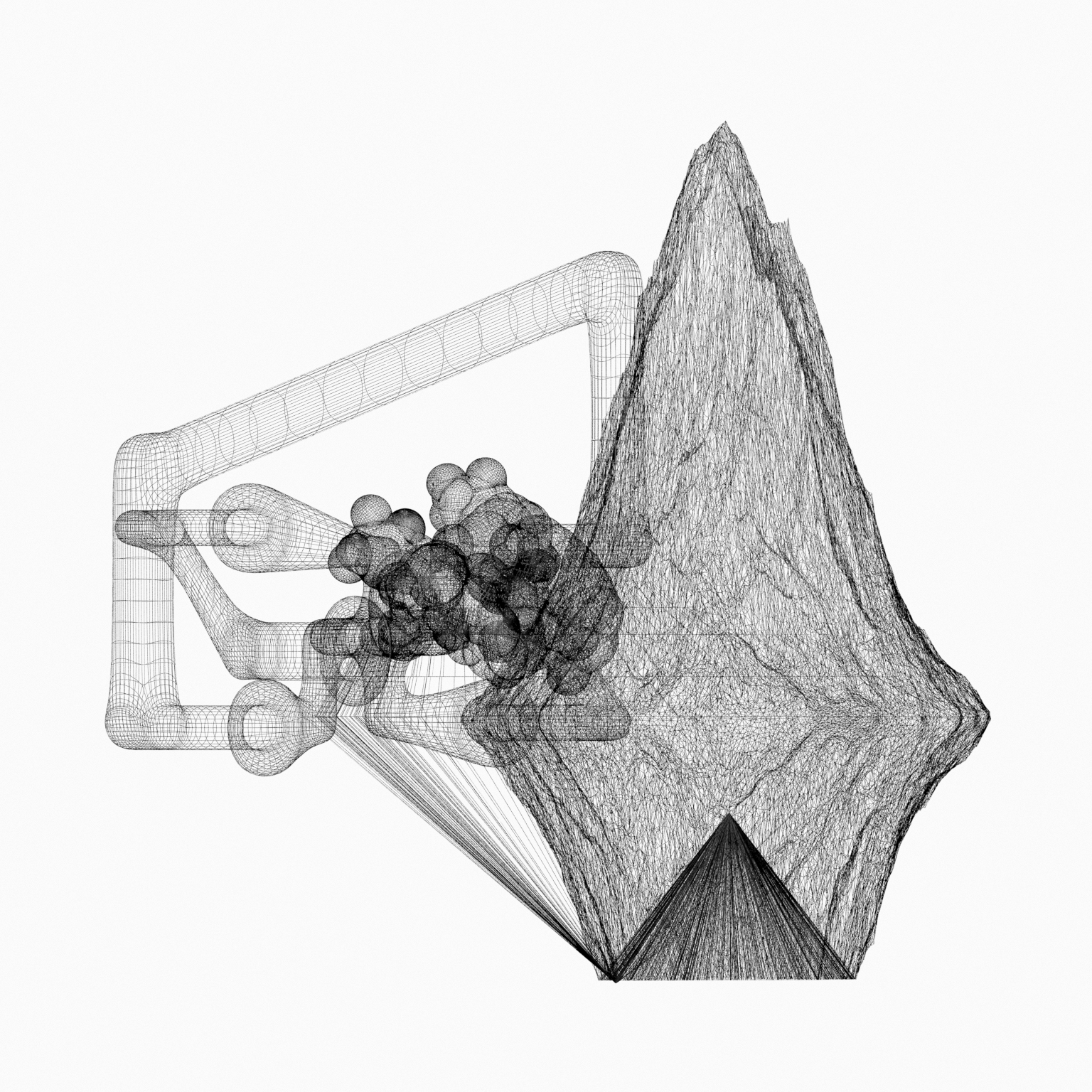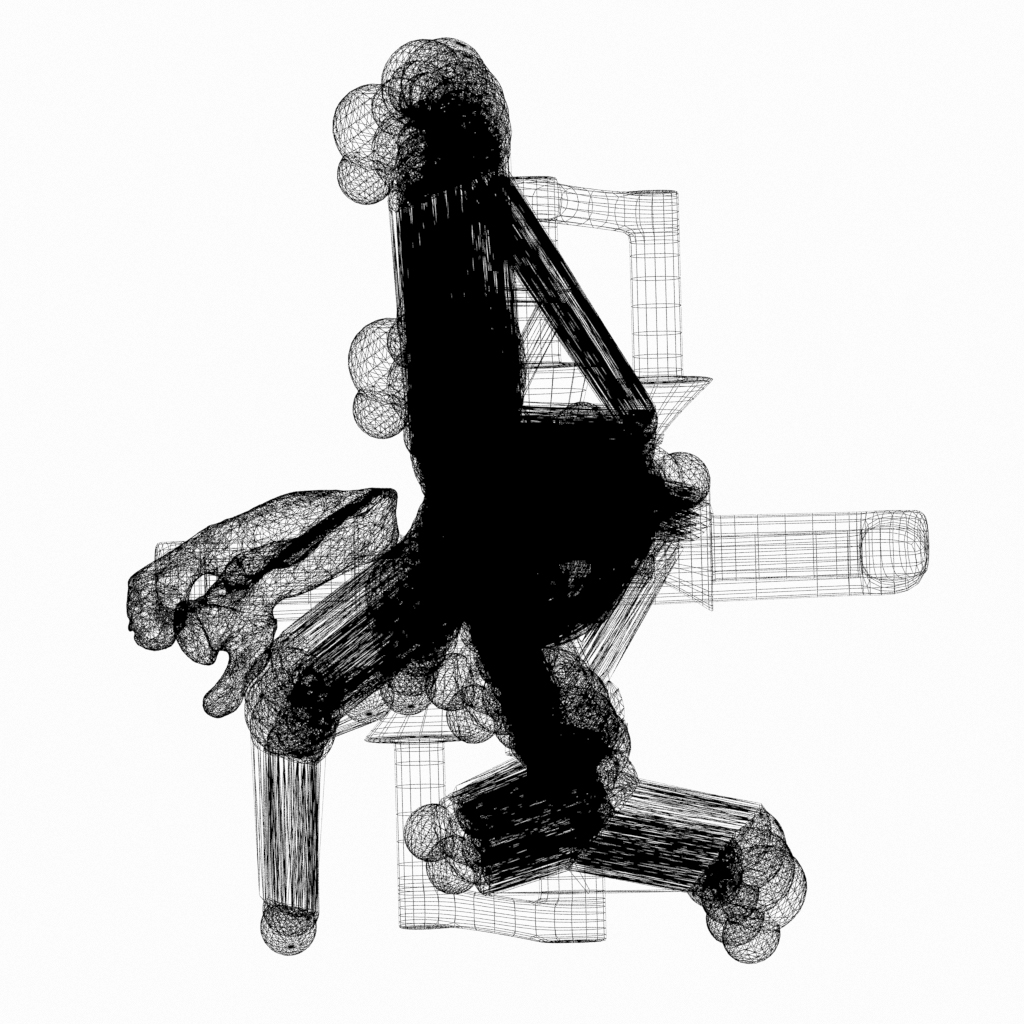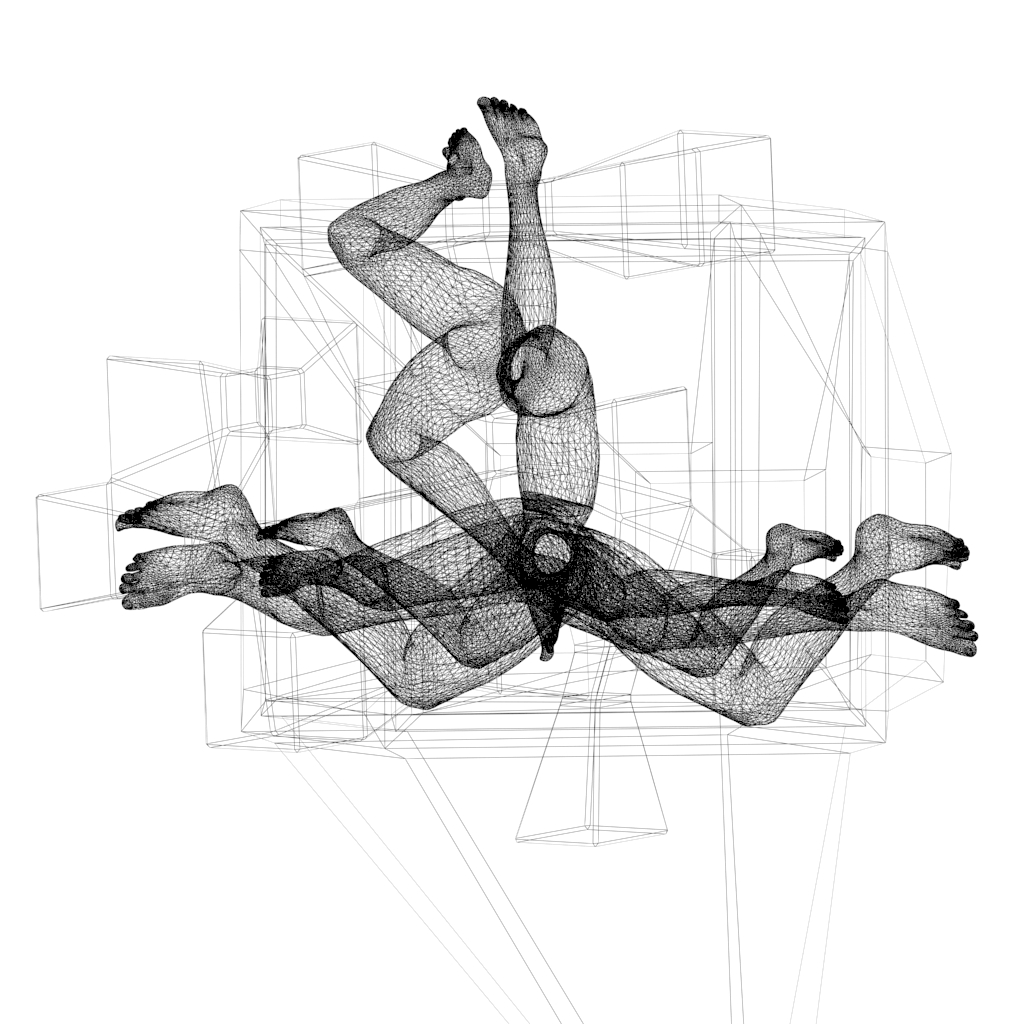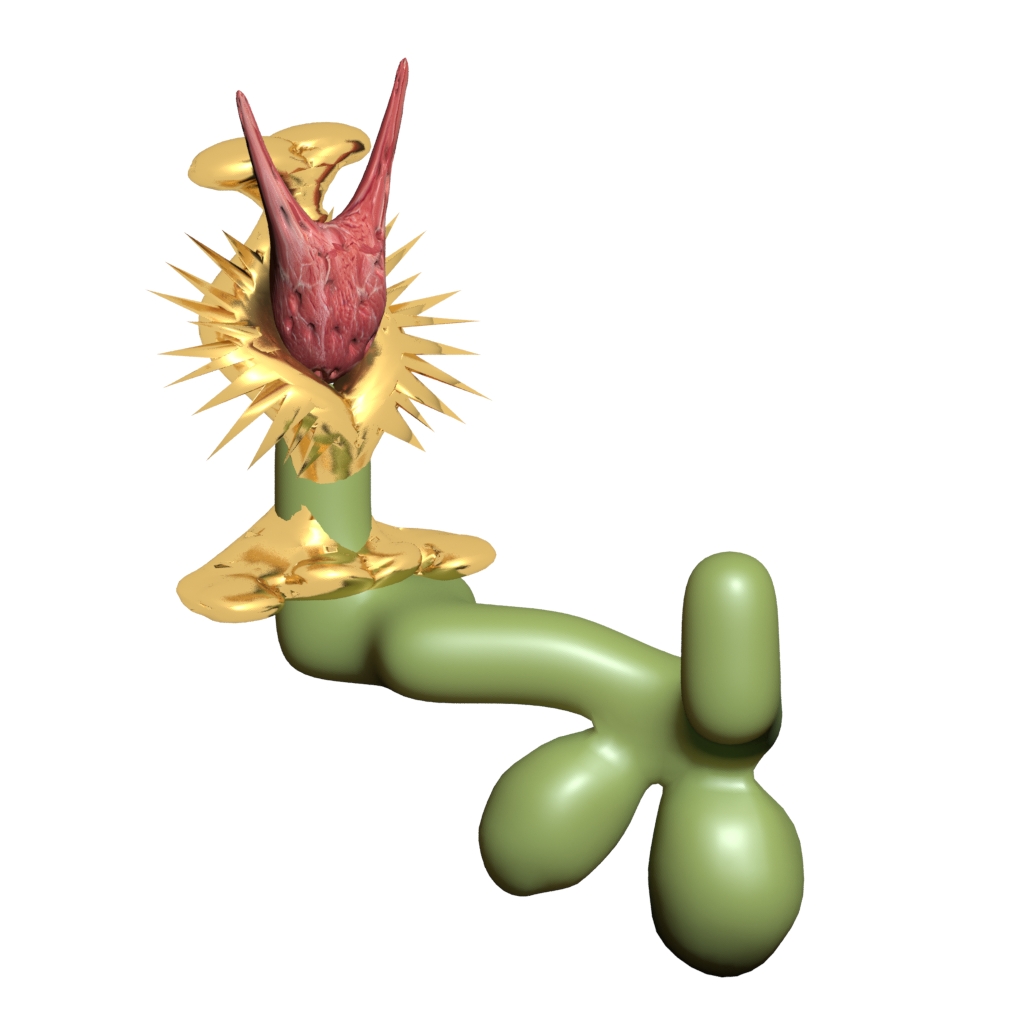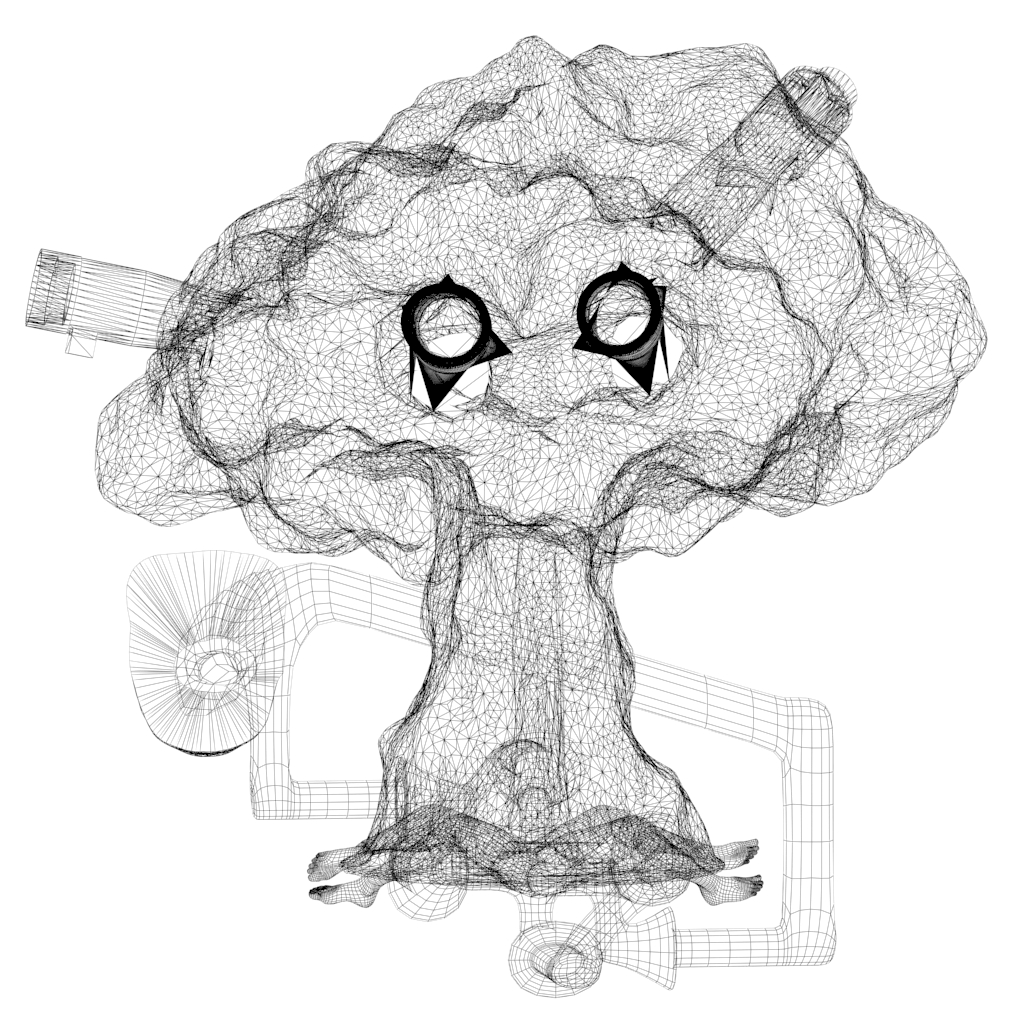Opening on June 25th, 2017 and through October 1, 2017 Michael Rees and Helena Helena Lukášová will launch Trans (forma): Bone Phone at GASK, a former Jesuit Monastery in Kutna Hora in the Czech Republic. The show was curated by Veronica Marešová. click here for GASK website.
Click here for the pdf catalogue from the exhibition.
Click here for the website of Helena Lukášová
The exhibition is the outcome of a collaborative effort between Czech Artist Helena Lukášová and American Artist Michael Rees.
Both artists work with digital technologies and seek to create tangible, material art with a focus on the relationship between virtual and physical reality.
For this project, they have let themselves be inspired by the rich history of Kutná Hora, in particular the famous ossuary in Sedlec. The exhibition combines the legacy of traditional fortune-telling using bones with contemporary man’s artificial existence shaped by cognitive behavioural strategies and augmented reality. On a deeper level, the artists explore the natural state of things and engage in a polemic with the inner essence of the object and its more recent definition, according to which an object becomes an artificial object with metaphorical meaning and is surrounded by various forms of digital information.
The playful, interactive installation, located in the Jesuit College’s Baroque baths and cellar spaces, consists of 3D prints of bones, transparent balloons, and photographs of Kutná Hora and its surroundings, all of which act as triggers for augmented reality. The resulting exhibition is a space for exploring and experimenting with various configurations of things that connect and communicate with one another. At the same time, we become witnesses to these objects’ potential transformation (by revealing another layer of their objectness) and their Babelian confusion of the material world.
Special thanks for Milan Doležal on the Trans (Forma) application.
Helena Lukášová
“More important is where we situate the ‘reality of the image’: within the materially present object, or within its capacity for an implicit convolution of events that the viewer/participant can unwind. Milena Bartlov., from the book Real Presence, 2012”
I spend a long time thinking about where intangible things come from. What are the pre-images for real phenomena and for those which the reality of presence has already passed by? The structure of time is a tiny territory that moves with the individual and is constantly changing shape. Physical objects are anchored within our consciousness according to how they are interpreted or depicted. The convoluted coexistence of objects and their interrelationships is constantly in flux.
Some objects are a record, others an augur of the future; if we use this approach to additionally abandon our linear perception of time, we can spy the fascinating and dynamic structure of Existence. When we first started working together, Michael Rees and I considered the significance of a 3,500-year-old Chinese divination bone that had been ritually burned. The fissures caused by the intense heat allowed those present at the divination to see into the future. The prophesy was then carved into the bone’s surface, making it a historical record of early writing. The object straddles time and space and is an excellent representation of the complicated nature of the above-described relationships. An enlarged replica of the bone with a mirror-like surface that reflects its surroundings forms a part of the exhibition.
What is the essence of things in the present? Digital media have significantly expanded the fog of meanings and the functions of things. In this emerging era of the internet of things, things take on an additional dimension: the internet of autonomous things and devices. All this urgently relativizes the concept of ‘reality’. Trans (Forma) / The Bone Phone explores how we understand the meaning of things and their interrelationships.
The transparent model floating on the glass surface covering the historical pool resembles a model of a wormhole in which objects are theoretically broken apart, are transformed into energy, and pass through the dimension of time. The chrome-plated 3D printed objects connected to one another by black twine inside the sterile inflatable object are confronted with their virtual presence through augmented reality. Randomly selected virtual objects from the library of objects that grew out of the artists’ mutual communication through shared data emerge in constantly new constellations in their intangible form above the photographs from Kutna Hora placed on the surface of the model.
Through augmented reality, viewers who enter this space can manipulate virtual models that appear in this real space on the screen of their smart devices. In the second installation, the model consists of two spheres wedged against one another within the limited dark space of the cellar. It resembles a growing and splitting cell. The object can thus be understood as a depiction of transformation. Augmented reality is here present in a figurative sense through the viewers’ primary experience of becoming aware of their own shadow – a reference to Plato’s allegory of the world of ideas. The combination of visible and hidden, of thought and seeing, creates reality in a balanced relationship.
-Michael Rees
“A symbiotaxium would be any society. Symbiotaxiplasm, or more simply taxioplasm, would be the mass of men (or, alternatively, any associated animals) and assimilated things which forms the society, regarded as matter.
-Arthur Bentley”
Trans (Forma) / The Bone Phone is a collaborative exhibition between Helena and myself, Michael Rees. The project was developed through ongoing interaction between the artists using virtual 3D authoring programs to develop an elaborate library of objects representing a kind of conversation through 3D objects. This library then formed the source for the exhibition’s material. The 2D prints and 3D prints are drawn from the library – and in the case of the 3D prints – arranged within the inflatable torus that is the primary object of the installation.
The library of objects is also used in the augmented reality application that accompanies the exhibition. Augmented reality uses a smart device’s camera and photomarkers to load the 3D objects in order to produce an overall collage of the photographed scene. The markers and physical objects are contrasted against the virtual objects floating in the scene as displayed by the application.
For me, this manner of working is inspired by Arthur Bentley’s sociological concept of symbiotaxiplasm, which I see as an action of interconnectedness between people and things. It is a kind of transparent substance that creates interdependent relationships by connecting various organisms. It was also the source of inspiration for William Greaves’s film Symbiopsychotaxipliasm, in which – by adding the word ‘psycho’ – Greaves adds a component of personal neurotic interaction governed by formal rules. Trans (Forma) sets up just such an interaction as a way to enlarge the sphere of objects as sociological and political entities, tinged by artistic intent and subtle emotional differences.

